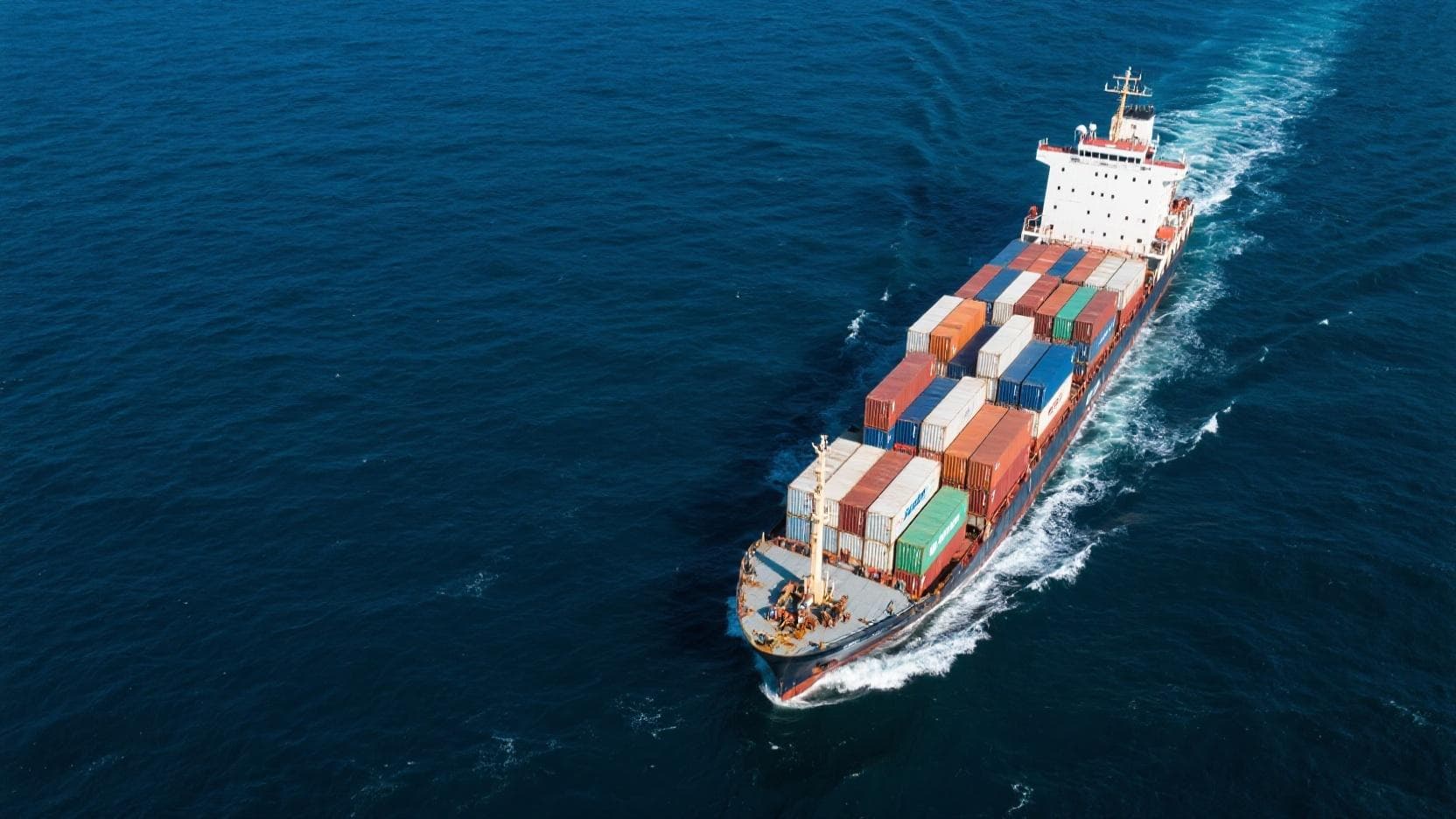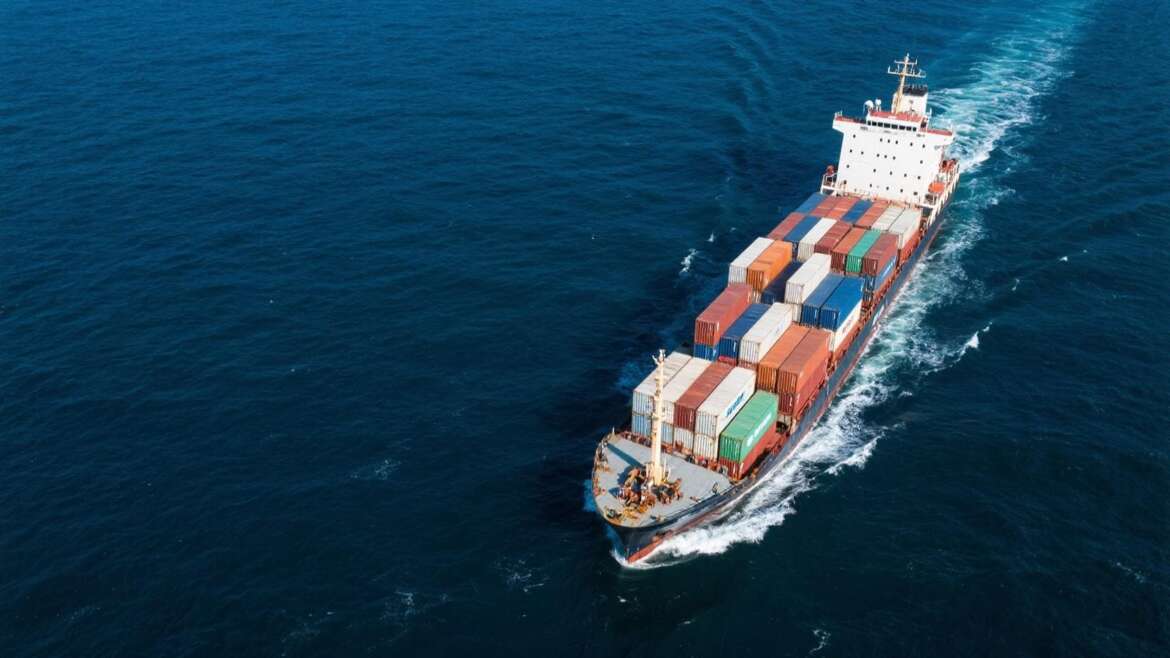Looking to optimize your shipping from China to the USA? Understanding the major ports, shipping routes, transit times, and service options—such as port-to-port or door-to-door—is essential for smooth, cost-efficient logistics. This guide provides a clear overview of the key export and import gateways, main sea routes, and practical tips to choose the right shipping method and a reliable freight forwarder for your China–USA trade.

Major Ports in China (Export to USA)
China’s container network is anchored by five clusters: Yangtze River Delta (Shanghai/Ningbo), Pearl River Delta (Shenzhen/Guangzhou), Bohai Rim (Tianjin/Qingdao/Dalian/Yantai), Southeast coast (Xiamen), and North Jiangsu (Lianyungang).
Inland connectivity relies on expressways, double-stack rail, and river barge networks—especially the Yangtze River system feeding Shanghai/Ningbo.
Typical exports to the USA include electronics, machinery, furniture, textiles/apparel, appliances, toys, auto parts, flooring/building materials, and home goods.
| Port Name | Location | Typical Exports | Main Inland Feeders & Access |
|---|---|---|---|
| Shanghai | Shanghai/Yangshan | Electronics, machinery, apparel, furniture, appliances | Jiangsu (Suzhou, Wuxi, Nantong), Zhejiang (Hangzhou), Anhui/Hubei by Yangtze river, G2/G60, rail |
| Shenzhen | Yantian, Shekou, Chiwan | Smartphones, electronics, IT, apparel, furniture | Dongguan, Guangzhou, Huizhou, Foshan, Hunan, Jiangxi via G4, high-speed rail |
| Ningbo–Zhoushan | South of Hangzhou Bay | Appliances, machinery, textiles, furniture, chemicals | Yiwu, Shaoxing, Jiangsu/Anhui via Hangzhou Bay Bridge, G92/G60, rail |
| Guangzhou (Nansha) | Pearl River Estuary, Guangzhou | Auto parts, building materials, machinery, furniture, chemicals | Foshan, Zhaoqing, Qingyuan, Guangxi/Hunan via river, G80/G4, rail |
| Qingdao | Shandong Peninsula | Machinery, tires, chemicals, home goods, food, seafood | Jinan, Weifang, Yantai/Weihai, North China via Jiqing Expwy, rail |
| Tianjin | Bohai Bay | Heavy machinery, vehicles/parts, electronics, steel | Beijing, Shijiazhuang (Hebei), Shanxi, Inner Mongolia via G2/G3/G5, rail |
| Xiamen | Fujian (Taiwan Strait) | Stone, footwear, furniture, electronics, kitchenware | Quanzhou, Zhangzhou, Ganzhou (Jiangxi) via G76/G25, rail |
| Dalian | Liaoning (Bohai/Yellow Sea) | Chemicals, machinery, auto parts, seafood, metals | Liaoning, Jilin, Heilongjiang via Harbin–Dalian rail, G11/G1 |
| Yantai | North Shandong Peninsula | Auto parts, machinery, electronics, tires, food | Yantai, Weihai, Weifang, N. Shandong via Rongwu Expwy, rail |
| Lianyungang | North Jiangsu (Yellow Sea) | Chemicals, solar/photovoltaics, glass, machinery | Xuzhou, Huai’an, N. Anhui/Henan by Longhai Railway, G30/G25 |
Major Ports in the USA (Imports from China)
The U.S. container network is split across West Coast gateways (direct trans-Pacific), East/Gulf Coast gateways (via Panama/Suez), and inland intermodal hubs fed by BNSF, Union Pacific, CSX, and Norfolk Southern.
West Coast ports (Los Angeles/Long Beach, Oakland, Seattle/Tacoma) dominate speed-to-market for Asia; East/Gulf Coast ports (NY/NJ, Savannah, Norfolk, Charleston, Houston, Miami) serve consumption centers via rail/highway corridors.
Typical imports from China include electronics, apparel, furniture, toys, appliances, auto parts, flooring/building materials, and general retail goods.
| Port Name | Location | Typical Imports | Inland Distribution |
|---|---|---|---|
| Los Angeles | San Pedro Bay, CA | Electronics, apparel, furniture, toys, appliances | BNSF/UP rail to Inland Empire, Phoenix, Dallas, Chicago via I-710/I-10/I-15 |
| Long Beach | San Pedro Bay, CA | Consumer goods, auto parts, plastics, furniture | On-dock rail (ICTF), to Inland Empire, Las Vegas, Dallas, Chicago via UP/BNSF |
| New York & NJ | Newark/Elizabeth/Staten Isl. | Retail, apparel, electronics, pharma, food | CSX/NS to Northeast/Mid-Atlantic/Midwest, I-95/I-78/I-80 to NY, Philadelphia, Chicago |
| Savannah | Savannah River, Georgia | Furniture, flooring, appliances, home goods, retail | On-dock rail to Atlanta, Nashville, Memphis, Charlotte; I-95/I-16 to Southeast |
| Oakland | San Francisco Bay, CA | Retail, beverages/food, machinery, consumer staples | UP/BNSF to Sacramento, Reno, Salt Lake City; I-80/I-5 to Bay Area/Central Valley |
| Seattle | Puget Sound, WA | Electronics, machinery, retail, wood products | BNSF/UP via I-5/I-90 to Seattle, Spokane, Boise, Midwest |
| Norfolk (VA Ports) | Hampton Roads, VA | Furniture, tires, machinery, consumer goods | NS/CSX to Mid-Atlantic/Midwest, Virginia Inland Port, I-64/I-95 to Richmond, Chicago |
| Houston | Houston Ship Channel, TX | Building materials, chemicals, machinery, retail goods | Trucking to Houston, Dallas, San Antonio; UP/BNSF rail to Southwest/Midwest |
| Charleston | S. Carolina Lowcountry | Furniture, auto components, retail goods | CSX/NS, I-26/I-95 to Inland Port Greer, Atlanta, Charlotte, Raleigh/Durham |
| Miami | Biscayne Bay, Florida | Electronics, apparel, housewares, consumer staples | Florida East Coast Railway, I-95/I-75 to S. Florida DCs, Orlando, Jacksonville |
Main Shipping Routes from China to USA
Route Map Overview
Main corridors link East/South/North China to U.S. West, East, and Gulf Coasts.
Services operate weekly loops; choose direct calls vs transshipment for speed vs flexibility.
Inland China uses river barge, rail, and highway feeders to origin ports; U.S. inland relies on intermodal rail and trucking.
West Coast (Trans‑Pacific Direct)
Typical strings: Shanghai → Ningbo → Yantian/Shekou → Los Angeles/Long Beach (PSW).
Best for speed‑to‑market; primary lane for retail, electronics, apparel, furniture, appliances.
Inland China feeders: Yangtze barges to Shanghai/Ningbo; Pearl River barges/trucks to Shenzhen/Guangzhou.
U.S. inland: on‑dock rail (BNSF/UP) to Inland Empire, Phoenix, Dallas–Fort Worth, Chicago via I‑710/I‑10/I‑15.
Port‑to‑port benchmark: 12–18 days (Shanghai/Yantian → LA/LB); add 2–5 days for terminal dwell.
Pacific Northwest & Northern California
Typical strings: Yantian/Xiamen → Oakland; Shanghai/Ningbo → Seattle/Tacoma.
Serves Northern California, Pacific Northwest; strong for furniture, machinery, paper/wood products, retail goods.
U.S. inland: intermodal to Sacramento, Reno, Salt Lake City, Spokane, Minneapolis via UP/BNSF and I‑5/I‑80/I‑90.
Port‑to‑port benchmark: 14–20 days depending on origin and service speed.
East Coast (All‑Water via Panama Canal)
Typical strings: Yantian/Nansha/Xiamen → Panama Canal → Savannah/Charleston → Norfolk → New York/New Jersey → Miami.
Best when DCs are in Southeast/Mid‑Atlantic/Northeast; avoids West Coast inland rail but adds ocean time.
Common commodities: furniture, flooring, appliances, home improvement, general retail.
Port‑to‑port benchmark: 25–35 days; schedule reliability varies with canal constraints and seasonality.
East Coast (All‑Water via Suez Canal)
Typical strings: North/East China (Qingdao/Tianjin/Shanghai) → Suez → New York/New Jersey → Norfolk.
Useful when Panama capacity tight or for northern China origins; typically longer than Panama.
Port‑to‑port benchmark: 28–40 days depending on rotation and transshipments.
Gulf Coast (All‑Water via Panama Canal)
Typical strings: South/East China → Panama → Houston/New Orleans.
Strong for building materials, chemicals/plastics, machinery, retail goods headed to Texas and the Southwest.
Port‑to‑port benchmark: 26–34 days; inland trucking to Dallas/Austin/San Antonio is efficient.
Transshipment Hubs
Common hubs: Busan, Kaohsiung, Singapore, and occasionally Hong Kong.
Pros: more frequent sailings and flexible port pairs; cons: added handling and 2–6 days transit.
Use direct calls when speed and schedule reliability are critical; use hubs for network breadth.
Inland Gateways & Feeder Networks in China
Yangtze River barge: Anhui/Hubei/Jiangsu feed Shanghai/Ningbo.
Pearl River barge/highway: Dongguan/Foshan/Guangzhou/Huizhou feed Shenzhen/Guangzhou.
North China rail/highway: Beijing–Tianjin corridor; Harbin–Dalian; Longhai Railway to Lianyungang.
Yiwu small commodities and Shaoxing textiles typically route via Ningbo.
U.S. Inland Distribution Corridors
West Coast IPI: LA/LB/Oakland/Seattle/Tacoma to Inland Empire, Phoenix, Salt Lake City, Denver, Dallas, Chicago via UP/BNSF.
East Coast intermodal: NY/NJ/Savannah/Norfolk/Charleston to Columbus, Chicago, Atlanta, Charlotte via CSX/NS.
Gulf intermodal: Houston to Dallas–Fort Worth, San Antonio, Kansas City via UP/BNSF; strong regional trucking.
Transit Time Benchmarks (Port‑to‑Port)
China → U.S. West Coast: 12–20 days.
China → U.S. East Coast (Panama): 25–35 days.
China → U.S. East Coast (Suez): 28–40 days.
China → U.S. Gulf Coast: 26–34 days.
Add 3–7 days for peak‑season congestion, weather, or customs exams.
A professional forwarder (e.g., Dantful International Logistics) can simulate lanes, compare schedules, and optimize total landed cost based on your DC network, commodity mix, and seasonality.
Port-to-Port Shipping: Transit Time & Cost Overview
Definition: Ocean service between named origin and destination ports; importer arranges inland haulage and customs.
Transit time (port-to-port):
China → U.S. West Coast: 12–20 days.
China → U.S. East Coast (Panama): 25–35 days.
China → U.S. East Coast (Suez): 28–40 days.
China → U.S. Gulf Coast: 26–34 days.
Add 2–7 days for peak-season dwell, weather, canal constraints, or exams.
Cost overview:
FCL/LCL base ocean rates vary by lane, equipment, and seasonality.
Surcharges (BAF, PSS, GRI) and direct vs transshipment choices affect totals.
See “Sea Freight Cost from China to USA” for typical ranges; request live quotes for accuracy.
Door-to-Door Shipping: Full Process, Timing & Cost
Process (concise): Pickup → Origin handling/export clearance → Ocean transit → Arrival → Customs/brokerage → Port handling → Inland delivery.
Typical timing (factory to U.S. door):
West Coast FCL: ~18–30 days; LCL adds 3–7 days.
East Coast (Panama) FCL: ~30–45 days; Suez can be longer.
Gulf Coast FCL: ~28–40 days.
Buffer 1–3 days for pickup scheduling and terminal availability.
Cost components:
Origin trucking/packing, terminal handling, ocean freight, destination THC/demurrage/chassis, brokerage/duties/taxes, inland trucking/rail, optional liftgate/inside delivery, cargo insurance.
Tips:
Pre-clear customs and schedule drayage early; track free time to avoid demurrage/detention.
Match Incoterms to responsibilities (EXW/FOB/DDP) and use a forwarder for end-to-end visibility.
Shipping Method Comparison: Port-to-Port vs Door-to-Door
Port-to-Port:
Pros: Lowest base ocean cost; flexible inland choices; high control.
Cons: More coordination; risk of demurrage/detention if not managed; broker/trucker needed.
Best for: Experienced importers; DCs near ports; established domestic carriers.
Door-to-Door:
Pros: Single point of contact; predictable total time/cost; fewer admin steps.
Cons: Higher all-in cost; less flexibility; performance depends on forwarder.
Best for: First-time importers; small teams; remote DCs; time-sensitive launches.
Incoterms alignment: Port-to-port suits FOB; door-to-door suits EXW/DDP.
Cost/time delta: Door-to-door typically adds 2–5 days and ~10–25% vs pure ocean, depending on distance and service level.
Decision anchor: Choose based on DC location, volume, budget, and compliance complexity.
How to Select the Right Freight Forwarder for China-US Shipments
China–USA lane expertise: Proven trans-Pacific operations, with guidance on direct vs. transshipment services and West/East/Gulf entry strategies.
Full-service scope: FCL/LCL, OOG/reefer, origin pickup, export clearance, customs brokerage (via licensed partners), drayage, rail/truck inland, and door-to-door.
Compliance capability: Accurate ISF 10+2 filing, CBP entry preparation, HTS classification assistance, and advisory on Lacey Act, TSCA Title VI, ISPM 15, and relevant CPSC/ASTM requirements.
Licensing & partners: FMC/NVOCC licensing when applicable, bonded facilities, and vetted U.S. broker/trucker networks.
Space & schedule reliability: Carrier allocations during peak seasons; realistic ETAs and reroute options when canals or ports congest.
Transparent pricing: Itemized quotes distinguishing ocean base rate, BAF/PSS/GRI, origin/destination THC, chassis, demurrage/detention policies, and inland haulage.
Service SLA & support: Single point of contact, bilingual ops teams, proactive issue management, and documented response times.
Risk management: Cargo insurance options, claims handling, corrective action plans for damages or delays.
References & KPIs: On-time performance, average dwell, claim ratio; ask for case studies in your commodity and route.
Value-added services: Consolidation, relabeling, repack, warehousing, and compliance document review.
Quick checklist:
Does the forwarder cover your origin city and chosen U.S. port? Can they pre-clear customs and schedule drayage?
Are quotes fully itemized with surcharges and free-time terms? Is ISF filing confirmed before loading?
Do they offer real-time tracking and escalation contacts? Can they handle special cargo (reefer/OOG)?
Why Dantful.US?
Trade-lane focus: Dedicated China–USA teams covering Shanghai/Ningbo/Shenzhen/Guangzhou/Xiamen/Tianjin/Qingdao and U.S. gateways (LA/LB, Oakland/Seattle/Tacoma, NY/NJ, Savannah/Charleston/Norfolk, Houston/Miami).
End-to-end service: Door-to-door solutions with origin pickup, export clearance, ocean booking, ISF 10+2, customs brokerage coordination, port handling, drayage/rail, and final delivery.
Compliance support: Practical guidance for Lacey Act declarations, TSCA Title VI composite wood labeling, ISPM 15 wood packaging, and relevant CPSC/ASTM product standards.
Reliability & visibility: Space protection on major strings, realistic ETAs, milestone tracking, and proactive alerts to avoid demurrage/detention.
Transparent pricing: Clear, itemized quotes and total landed cost modeling (ocean + inland) for West/East/Gulf routes.
Bilingual operations: Local China teams and U.S. partners provide fast coordination across time zones.
Use cases: Retail/e-commerce, furniture, electronics, appliances, building materials; weekly consolidations for LCL and competitive FCL bids.
Getting started: Share SKU list, dims/weights, Incoterms, origin factory address, and target U.S. destination—Dantful.US will map the optimal route and quote.



Leave a reply